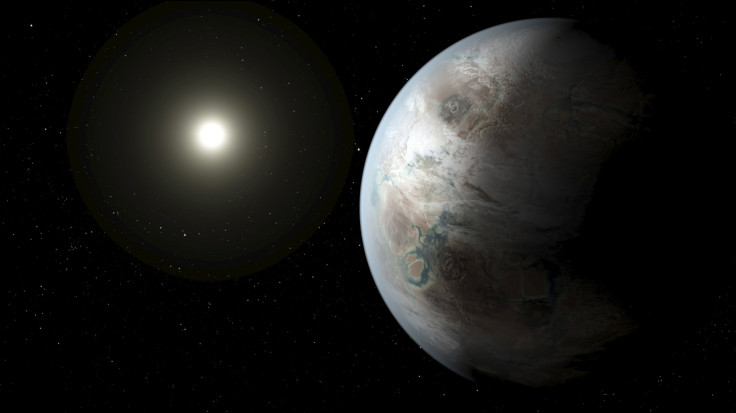NASA's Kepler Mission Discovers Kepler-452b, Planet With 'Substantial Opportunity' To Support Life

NASA’s Kepler telescope exploration mission discovered an Earth-like planet with qualities that provided a “substantial opportunity for life to arise,” officials said Thursday. Dubbed Kepler-452b, the planet is situated about 1,400 light-years away from our solar system.
While the newly-discovered planet is substantially larger than Earth in terms of diameter, it’s also the smallest planet NASA has discovered in what it calls a “habitable zone” of a G2-type star, like the Sun in our solar system. Thus, Kepler-452b could, in theory, support liquid water, the substance essential to the development of all known life.
“We can think of Kepler-452b as an older, bigger cousin to Earth, providing an opportunity to understand and reflect upon Earth’s evolving environment,” said Jon Jenkins, who analyzes Kepler program data at NASA’s Ames Research Center in California, according to a press release. “It’s awe-inspiring to consider that this planet has spent six billion years in the habitable zone of its star; longer than Earth. That’s substantial opportunity for life to arise, should all the necessary ingredients and conditions for life exist on this planet.”
Kepler-452b orbits its Sun-like star in 385 days, only slighter longer than Earth’s annual orbit. The planet’s sun, called Kepler-452, has the same temperature as the Sun, but with a diameter 10 percenter larger and with 20 percent more brightness.
“On the 20th anniversary year of the discovery that proved other suns host planets, the Kepler exoplanet explorer has discovered a planet and star which most closely resemble the Earth and our Sun. This exciting result brings us one step closer to finding an Earth 2.0,” said NASA’s Science Mission Directorate’s associate administrator John Grunsfield.
NASA analysts came across Kepler-452b while examining data the Kepler Space telescope collected from 2009 to 2013, the first four years of its mission. The program identified at least 4,696 potential planets over that time period, with 1,030 confirmed.
This isn’t the first time the Kepler team has discovered an Earth-like planet. The team announced in January that it had found eight “Earth-like planets,” including two that likely had “rocky” surfaces. Later that month, researchers found a solar system that was more than 11 billion years old.
© Copyright IBTimes 2024. All rights reserved.






















